- completed
[Hourglass]
Investigation for gravity dependence of soft terrain on planetary surface
- Physical Science
ISS Science for Everyone
SCIENCE OBJECTIVES FOR EVERYONE
The Hourglass investigation examines the relationship between gravity and the behavior of granular materials such as regolith that covers the surface of planets and planetary-like bodies. Researchers observe various granular materials inside an hourglass and a measuring cylinder under different gravity conditions. Better understanding of the behavior of these materials supports the design of spacecraft for future missions landing on the surfaces of planets and other celestial bodies.
Experiment Description
RESEARCH OVERVIEW
- The mechanical properties of planetary surfaces, or regolith, are not well understood. Consequently, it is difficult to predict these properties in advance of missions to explore the surfaces of planets, asteroids, or planetary-like bodies.
- In the Hourglass investigation, data is acquired on the mechanical characteristics of the regolith covering the surface of planetary bodies. This is done by utilizing granular materials and different levels of gravity forces to simulate and the data necessary for the answering is acquired.
- Once the relationship between behavior of granular materials and the gravitational forces are clarified, this will aid future advances in spacecraft design for planetary exploration.
DESCRIPTION
The results obtained in the Hourglass investigation aim to match Dynamically Equivalent Manipulator (DEM) calculations for design verification of a spacecraft. There are different slopes of 30 and 60 degrees inside the hourglass, and it is possible to observe the difference in the dynamics of the granular material, the shape when moving on the slope, the falling speed, and the shape when depositing.
In the investigation using a measuring cylinder, it is possible to confirm the bulk density and the angle of repose of the granular materials for each force of gravity. In addition, eight different kinds of materials with different characteristics are enclosed in a vacuumed hourglass and measuring cylinder. Their behavior is recorded at a rate of 30 fps with a high definition (HD) camera under light-emitting diode (LED) illumination. Furthermore, the gravity environment is implemented every 0.1 G between 0.1 G and 2 G, and the acceleration value is also measured in synchronization with the image data.
Media Gallery
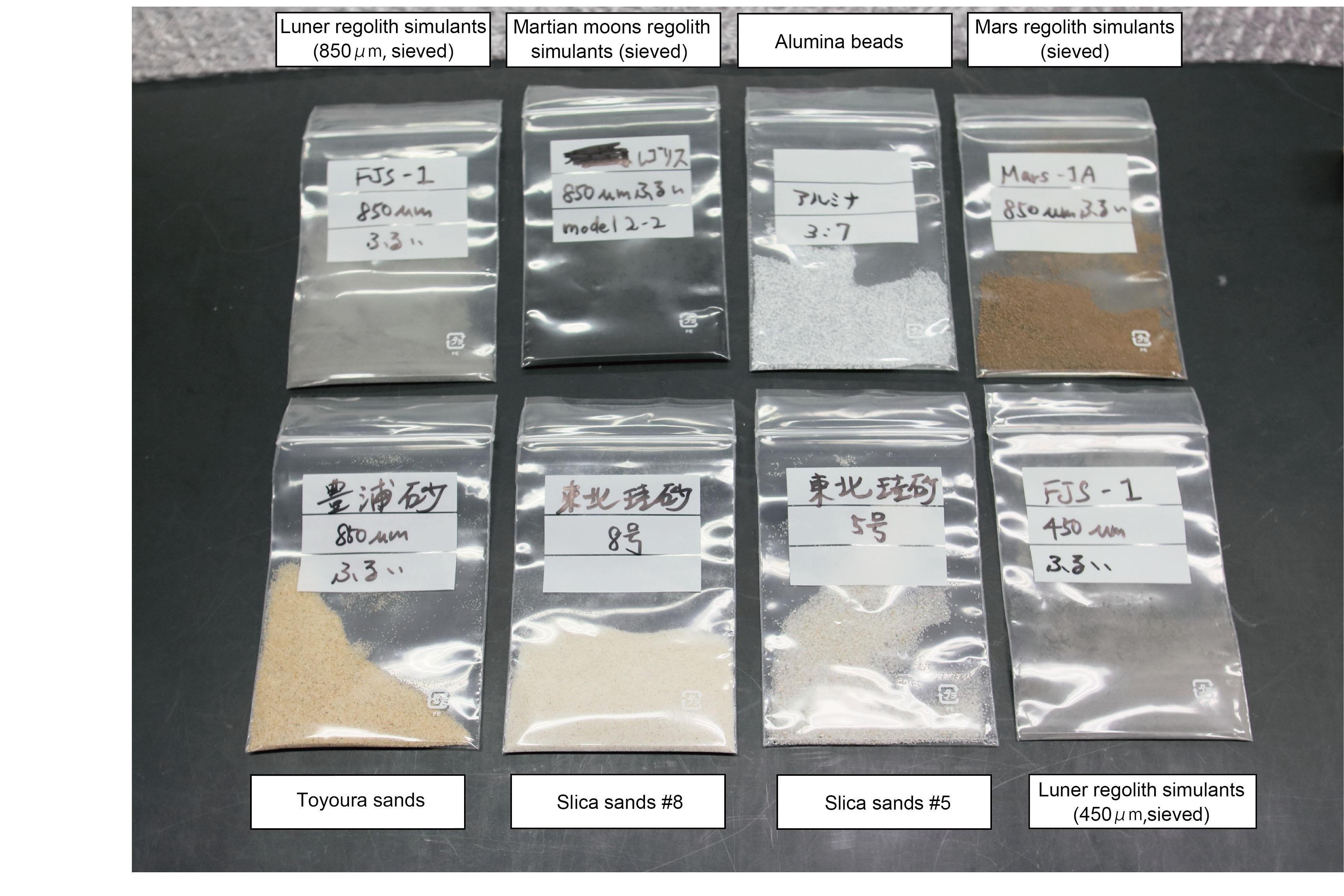
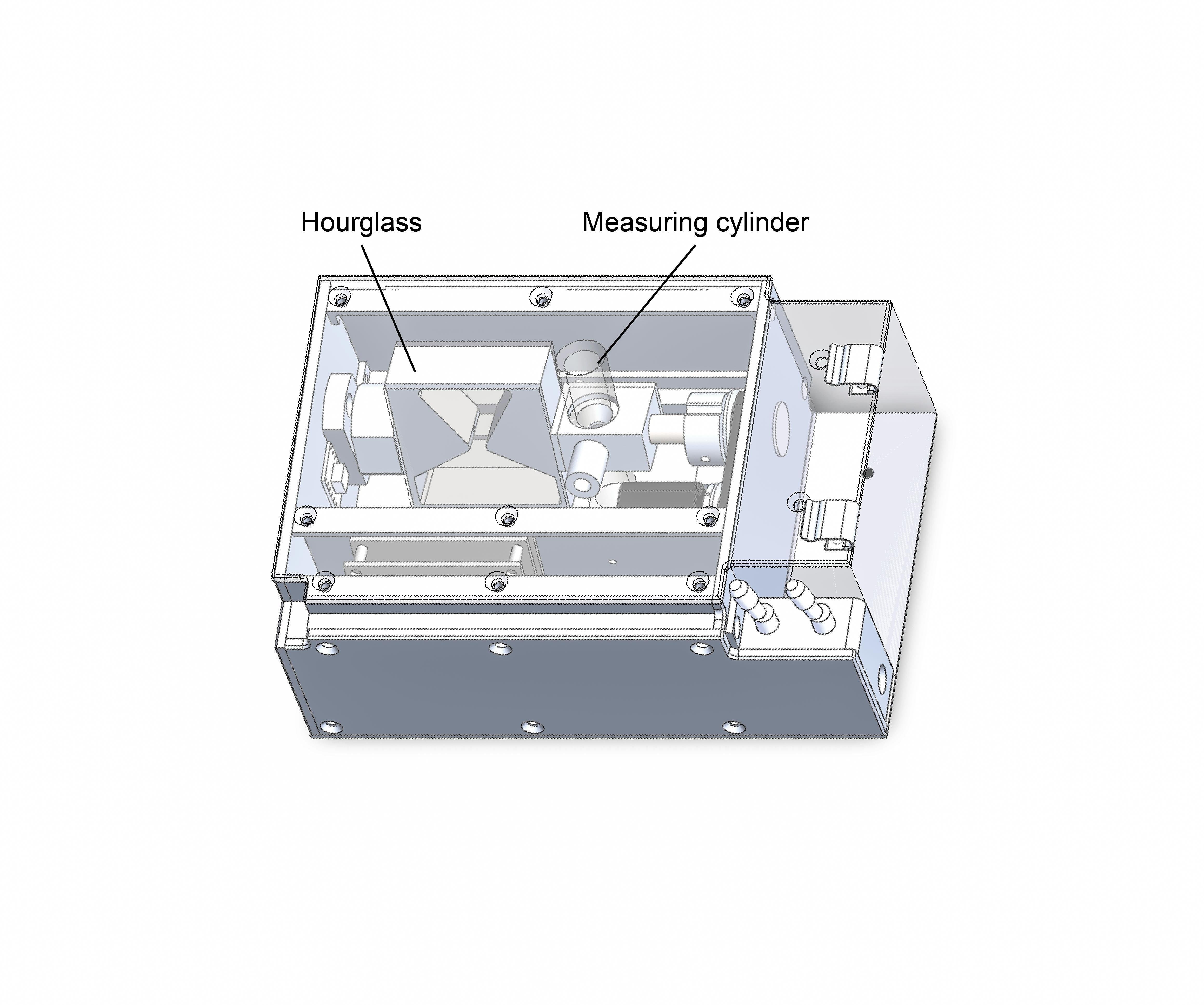
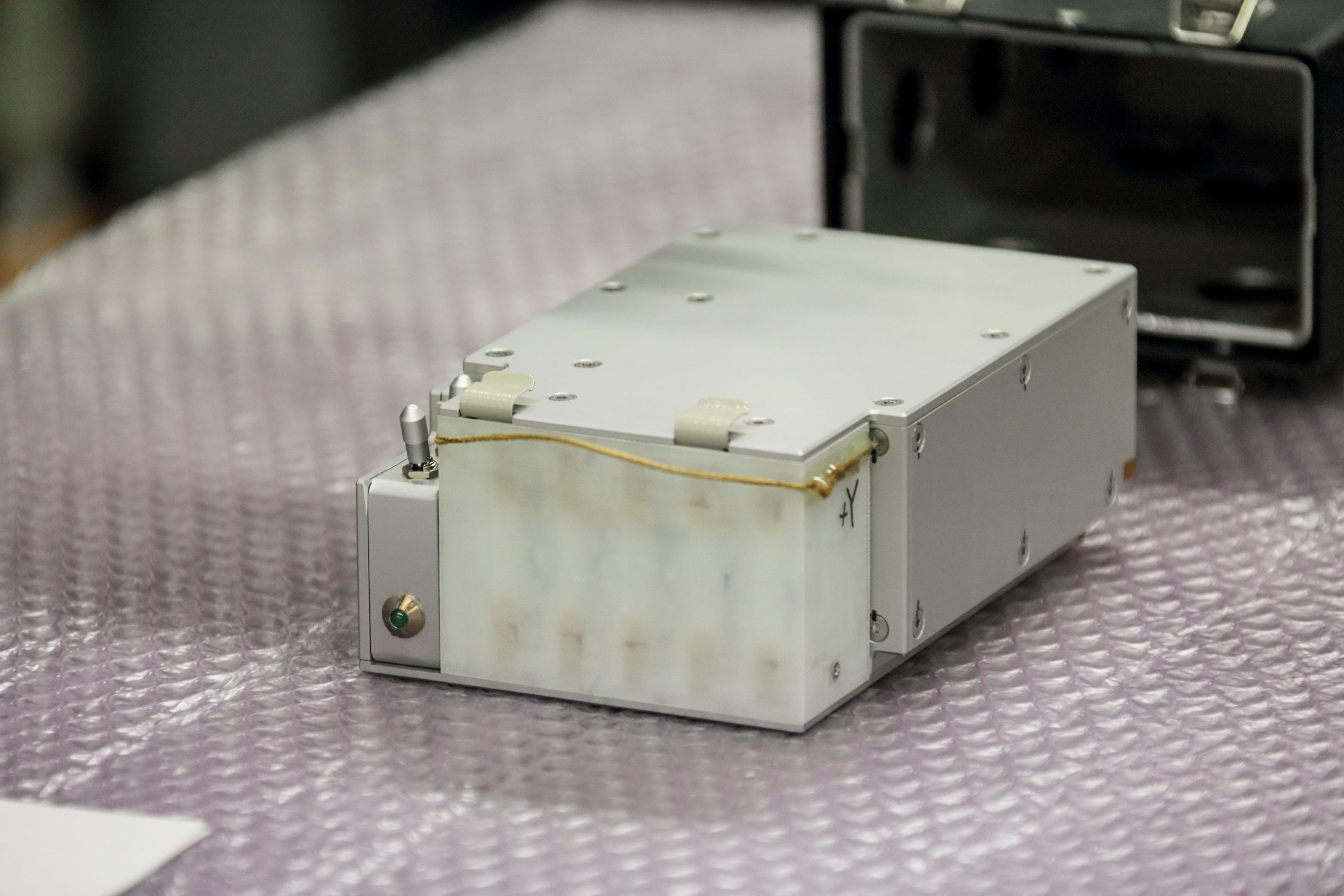
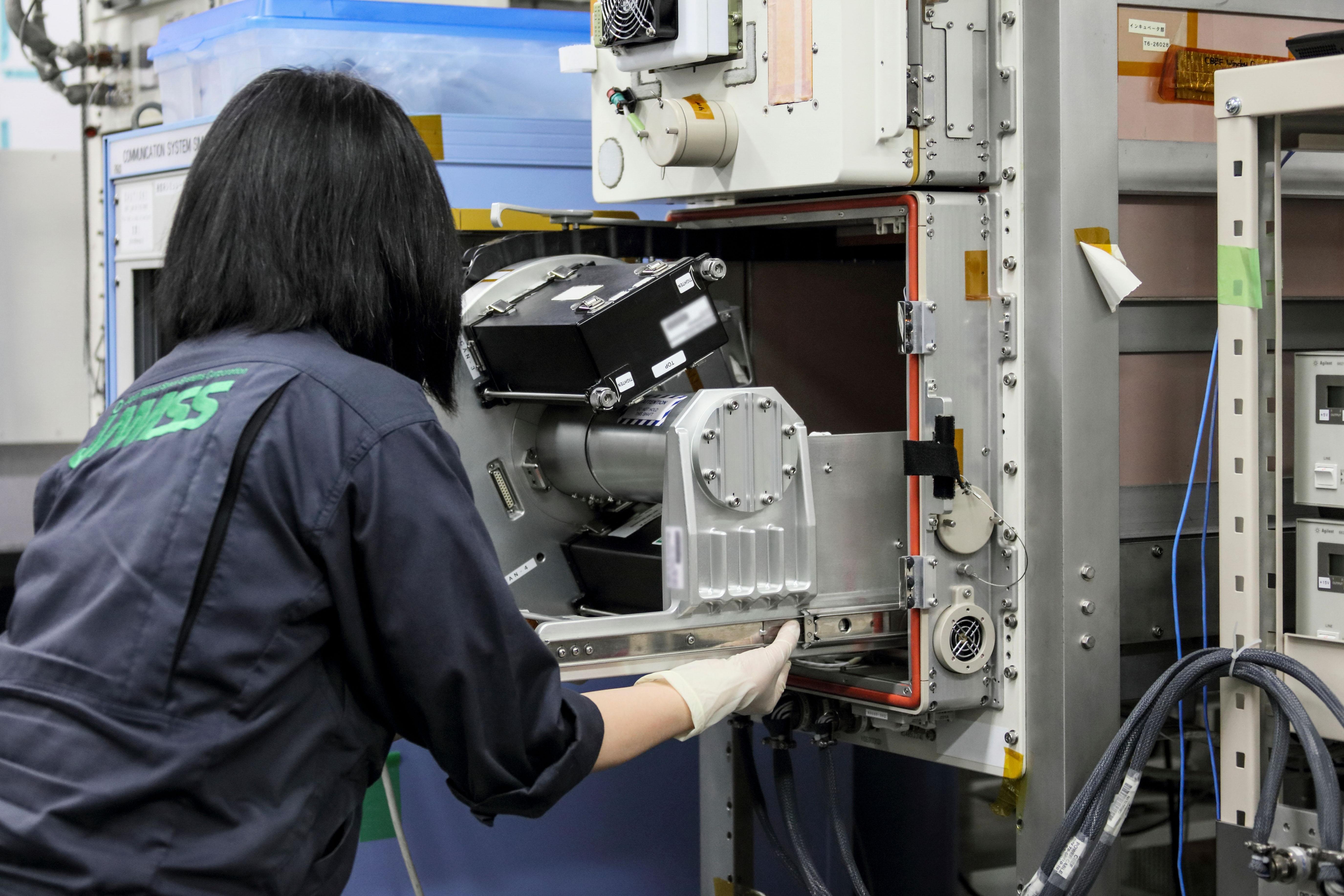
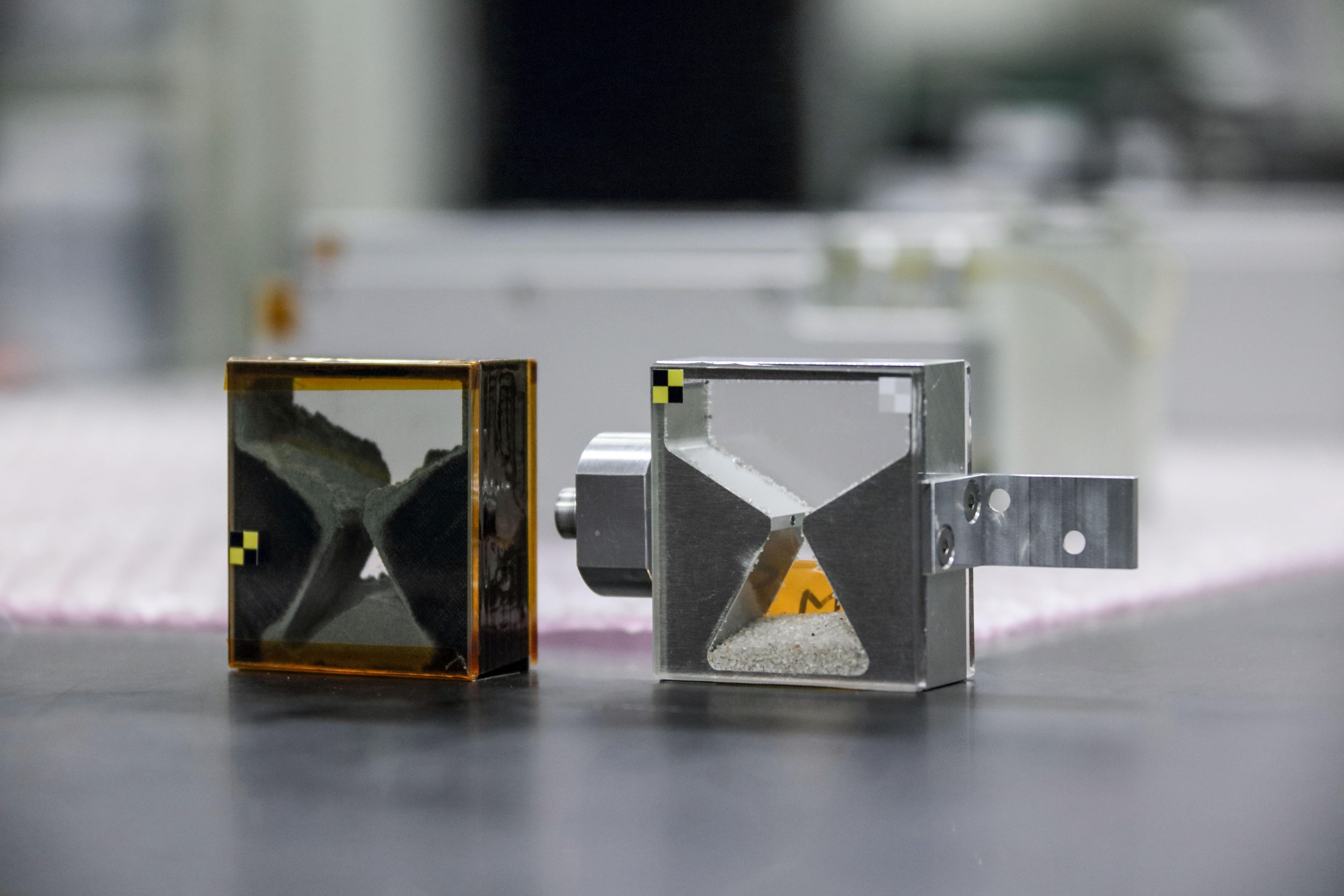
Applications
SPACE APPLICATIONS
This investigation supports the design of vehicles and instruments that come into contact with planetary surfaces, such as landing gear, soil sampling devices, and roving vehicles.
EARTH APPLICATIONS
The Earth Application for this investigation has yet to be identified.
Operations
OPERATIONAL REQUIREMENTS AND PROTOCOLS
For the Hourglass investigation, the dynamics of granular material enclosed in an hourglass and a measuring cylinder is observed under a gravitational environment of 0.1-2 G, mainly with gravity lower than the Earth (< 1G).
There are eight types of granular materials, including five types of regolith such as: simulated Lunar regolith, simulated regolith of Martian moons, simulated Martian regolith, silica sand and alumina.
In the experimental setup, the hourglass containing the different simulated regolith is inverted and turned around every one minute, while observed with an HD camera at 30 fps and an accelerometer.
Through each experiment, observations are performed three or more times under one condition, while acceleration is measured at the same time. All the data is returned to Earth with the storage media.
Publications
PRINCIPAL INVESTIGATOR(S)
OTSUKI Masatsugu [JAXA]
Unless specified otherwise, rights to all images belong to ©JAXA



